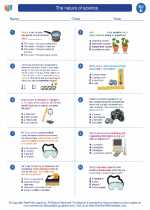What Causes Sleet?
Sleet forms when warm air above the ground produces rain, and then the rain passes through a layer of cold air near the surface. This causes the raindrops to freeze into small ice pellets before reaching the ground.
Comparison to Other Precipitation Types
Sleet is different from freezing rain, which falls as liquid water and then freezes upon contact with the cold surface. It is also distinct from snow, as it forms from frozen rain rather than directly from water vapor in the atmosphere.
Effects of Sleet
Sleet can create hazardous conditions on roads and sidewalks, as the ice pellets can accumulate and create slippery surfaces. It can also coat trees and power lines, potentially causing damage and power outages.
Understanding Sleet Formation
Understanding the conditions that lead to sleet formation involves knowledge of temperature variations in different layers of the atmosphere and how they affect the state of precipitation as it falls to the ground.
Conclusion
Sleet is a form of precipitation that occurs when raindrops freeze before reaching the ground. Understanding its formation and effects is important for understanding weather patterns and their impact on the environment and daily activities.
[Sleet] Related Worksheets and Study Guides:
.◂Science Worksheets and Study Guides Fifth Grade. The nature of science

 Worksheet/Answer key
Worksheet/Answer key
 Worksheet/Answer key
Worksheet/Answer key
 Worksheet/Answer key
Worksheet/Answer key
